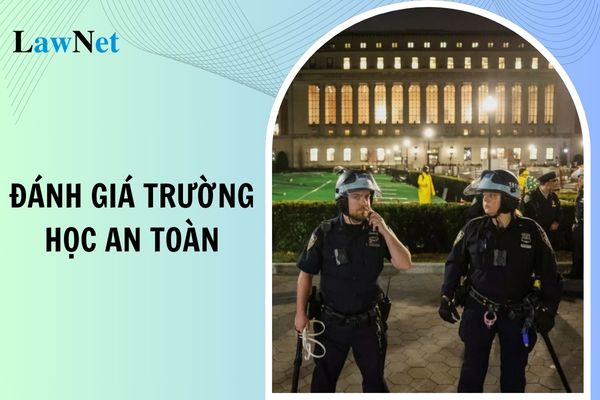What are the assessment levels of safe schools in Vietnam?
What are the assessment levels of safe schools in Vietnam?
Under Article 11 of Circular 18/2023/TT-BGDDT regulating the criteria for assessment of construction of safe schools for prevention and control of accidents and injuries:
Criteria for assessment of construction of safe schools for prevention and control of accidents and injuries
1. Schools shall fulfil and make self-assessment of criteria for construction of safe schools for prevention and control of accidents and injuries under the Appendix issued together with this Circular.
2. The construction of safe schools for prevention and control of accidents and injuries shall be assessed as follows:
a) "qualified": At least 80% of criteria are assessed as "qualified", including 100% of mandatory criteria assessed as "qualified".
b) "unqualified": Schools do not satisfy regulations in Point a of this Clause.
3. The result of assessment of safe schools for prevention and control of accidents and injuries is used as one of the criteria for assessment and recognition of schools as those that meet education quality accreditation/national standards according to regulations of the Ministry of Education and Training
Therefore, the levels of safe school evaluation are twofold:
- "qualified": At least 80% of criteria are assessed as "qualified", including 100% of mandatory criteria assessed as "qualified".
- "unqualified": Schools do not satisfy regulations

What are the assessment levels of safe schools in Vietnam? (Image from the Internet)
What are the contents of construction of safe schools in Vietnam?
Under Article 4 of Circular 18/2023/TT-BGDDT regulating the contents of construction of safe schools in Vietnam:
1. Satisfaction of safety requirements for facilities, equipment, means, documents, teaching resources that serve education.
2. Assurance about school safety and security; prevention and control of school violence, crimes and social evils; provision of guidance for students on participation in safe and healthy cyberspace in accordance with law regulations.
3. Education about knowledge and skills in prevention of drowning; traffic safety; fire safety; response to natural disasters; prevention of fall, collision, electrical injury and other accidents and injuries that regularly occur.
4. Protection and care of students’ health; assurance about food safety; prevention and control of school epidemics, harm caused by tobacco and its products, alcohol, beer and other addictive substances.
5. Implementation of the code of conduct and compliance with regulation on school democracy; mental education; performance of social work and psychological counseling for students in schools.
What are the principles of construction of safe schools in Vietnam?
Pursuant to Article 3 of Circular 18/2023/TT-BGDDT, the principles of construction of safe schools in Vietnam are:
- It is considered as an important and regular task of each school. The school shall give priority to performance of this task in conformity with the demand for education development, its actual conditions and those of each area.
- Local authorities and the community shall participate in construction of safe schools for prevention and control of accidents and injuries. Students, managers, teachers, staff and students' parents shall actively and effectively participate in the construction.
- The inspection and assessment shall be regular, objective, truthful, prompt, public and transparent.
What are the regulations on education about knowledge and skills for students in a safe school in Vietnam?
Under Article 9 of Circular 18/2023/TT-BGDDT the regulations on education about knowledge and skills for students in a safe school in Vietnam are regulated as follows:
1. Integrate education about prevention and control of accidents and injuries into subjects and education activities
2. Educate about knowledge and skills in assurance about school safety and security; prevention and control of school violence, crimes and social evils in schools, in the community or in form of online education.
3. Educate about knowledge and skills in drowning prevention with a focus on those in swimming and assurance about safety in the water environment; cooperate with families, authorities, agencies, organizations and individuals in managing and organizing safe swimming lessons in order to help students prevent drowning in the community.
4. Educate about knowledge and skills in traffic safety and cooperate with families in supervising compliance with regulations on traffic safety by students in the community.
5. Educate about knowledge and skills in fire safety, environmental protection, response to natural disasters, prevention and control of other injuries, including fall, collision, electric injury, burns, poisoning, and animal attacks.
6. Establish groups, teams and clubs to help students to proactively carry out a number of activities and deal with topics with a view to practicing skills in prevention and control of accidents and injuries in schools and give mutual support on the way to school and in families and in the community.

